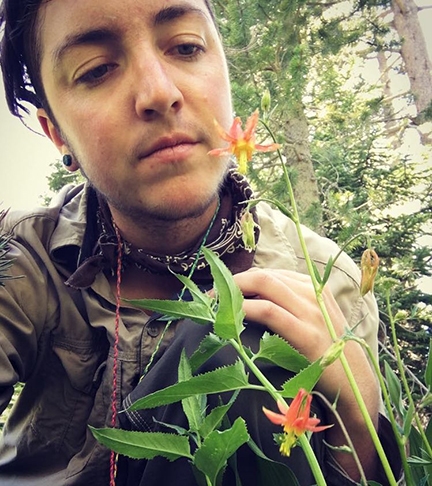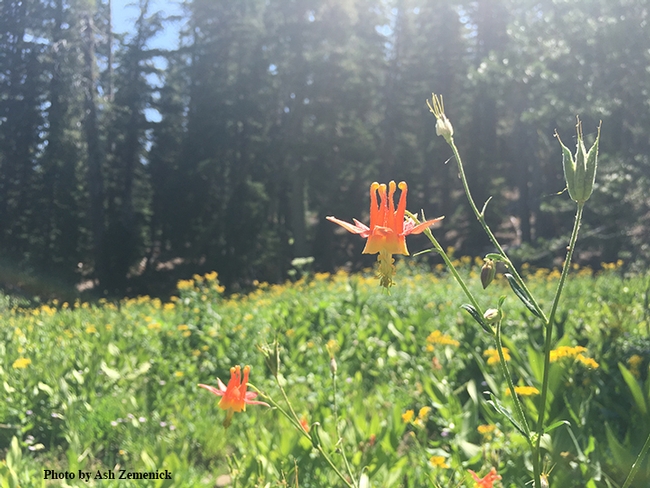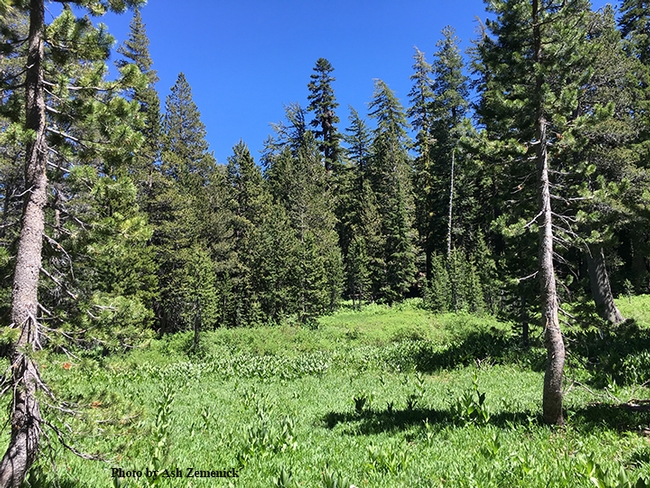
Have you ever considered them as important vectors of floral microbes?
Well, they are!
Community ecologist Ash Zemenick, formerly in the graduate student program of the UC Davis Department of Entomology and Nematology, will present an exit seminar, "Do Flower Visitors Network with Floral Microbes?" from 4:10 to 5 p.m., Wednesday, Nov. 8 in 122 Briggs Hall, UC Davis campus.
Zemenick received a doctorate in entomology in September 2017 from UC Davis, studying with major professor Jay Rosenheim and with assistant professor Rachel Vannette.
"Flowers are colonized by diverse microbial communities that can influence plant and pollinator health and mediate plant-pollinate interactions," says Zemenick, now a National Science Foundation postdoctoral fellow in the Weber lab at Michigan State University. "Because flower-visiting insects and hummingbirds can harbor high densities of microbial cells, flower visitors are thought to be important vectors of floral microbes. Although floral microbe community assembly is dependent, in part, on dispersal by flower visitors, floral microbe community assembly has yet to be fully considered in the context of the rich network of plant-flower visitor interactions with which they are linked."
The Zemenick dissertation involved "using an historic flower visitor dataset, field experiments and construction of a plant-flower visitor-microbe network to demonstrate the importance of flower visitor identity and interaction in mediating floral microbe community assembly and structure at both local and regional scales."
"With the help of four motivated undergraduates and many gracious entomologists, I built a tripartite plant-flower visitor-floral microbe network. Data was collected from 20 co-flowering plant species over a short phenological timespan in a high elevation wet meadow located in the Tahoe National Forest."
"Questions I (set about) answering with this dataset included: do plants occupy similar positions in both networks? Do plants with similar visitors have similar microbes? Which plants are hubs of floral microbe diversity? Can we determine whether dispersal (by visitor) or environmental filtering (by plant traits) is more important in structuring floral microbial communities?"
As a PhD candidate in the Rosenheim lab, Zemenick worked to "disentangle how the structure of plant-flower visitor interactions varies for different types of flower visitors, and the implications of varying structure for floral microbe communities."
Now, as a post doc in the Weber lab, "I will be studying how plant-mite interactions directly and indirectly influence leaf microbial communities and subsequent invasibility by pathogens. I will also be working on building a repository of introductory biology teaching material that humanizes the field of biology and biologists. It will include how biological research applies to current societal problems and highlight what it is like to be a biologist. The materials will be comprised of examples provided by biologists that self-identify as being part of underrepresented group(s) in STEM (e.g. in terms of race, ethnicity, gender, sex, sexuality, income, nationality, immigrant status, cognitive and physical ability, etc.)."
Overall, Zemenick enjoys studying ecological networks, community assembly, plants, insects, and microbes. "I also love to teach and help students get involved in research."
See more information on Zemenick's website, Inclusive Plant-Insect Microbial Ecology.
The UC Davis Department of Entomology and Nematology's fall quarter seminars, coordinated by Rachel Vannette, assistant professor, are held Wednesdays from 4:10 to 5 p.m. in 122 Briggs Hall. They are open to all interested persons. See seminar schedule.
Attached Images:

